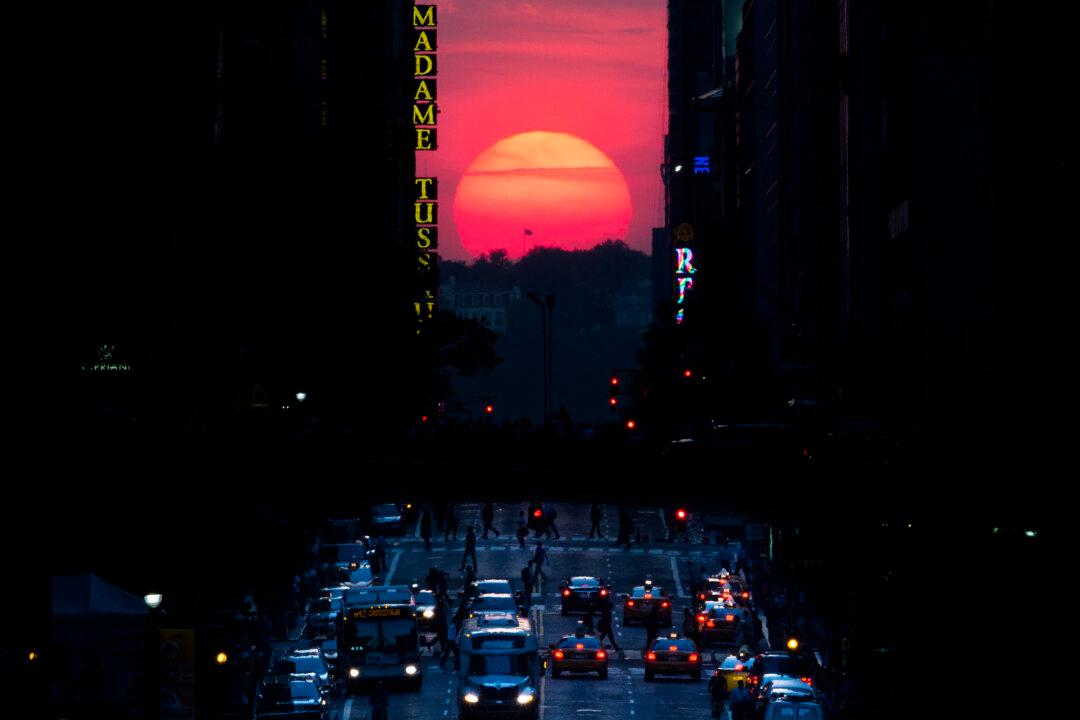If you tried to catch “Manhattanhenge” this weekend only to see clouds instead, you may find some comfort in these pictures of the visual phenomenon captured over the years.
Manhattanhenge is a play on the words “Stonehenge” and “Manhattan.” Just as people gather to watch the sunsets perfectly aligned with the prehistoric stone monument in Britain, people have also noticed the visual appeal of a sunset aligning along the grid structure of Manhattan’s streets.
Only two times a year does the sun set in a perfect angle so as to be visible from the eastern edge of the island, as it peaks, from the west, through the walls of skyscrapers.
One of the chances this year occurs on two days, May 29 and May 30, shortly after 8 p.m. But the first day’s opportunity was thwarted by clouds.







